One of the things that I’ve come to believe in over the past year is that there is no “perfect shoe” that will work for every single person. We are all slightly variable in our anatomy and physiology, and this carries over to things like our running style and which running shoes will work best for us.
When I first heard about the Newton Running shoes last year, I found them intriguing, mainly because I’d been hearing so much about how humans evolved to land on the midfoot or forefoot when we run. Newton running shoes are unique in that they are designed specifically for midfoot/forefoot runners. They accomplish this by reducing the height of the heel and increasing the cushion in the forefoot such that the overall offset or difference in thickness between heel and forefoot is minimized. In other words, Newton shoes have a flatter sole than most typical running shoes, and this makes it less likely that a runner will heel strike in them. In addtion to the minimal heel-toe differential, Newton shoes also have a unique system of “actuator lugs” under the forefoot that are designed to absorb shock upon impact and then release it on toe off (see the rectangular red lugs on the forefoot of the shoe to the left) – Newton calls this Action/Reaction Technology™. The idea is that the lugs get compressed under pressure when the forefoot contacts the ground, then they spring back, releasing energy during toe-off. The technology sounded interesting to me, but the steep price of Newton shoes had kept me from pulling the trigger on buying a pair (see more thoughts on Newton pricing at the end of this post) .
One of the nice things about writing a reasonably well-trafficked running blog is that occasionally companies will send you free gear to try out in exchange for a review. So it was that late last year a marketing rep for Newton shoes (and other outdoor sports companies) sent me a pair of Newton Sir Isaac shoes to try out (disclaimer: I received no form of compensation other than the shoes themselves). Here is how Newton describes the Sir Isaac:
“The Sir Isaac guidance trainer is designed for runners of all levels who are committed to Natural Running. Whether you follow Chi, Pose, Evolution, barefoot running or just want to run better, the Sir Isaac allows you to run naturally — with greater efficiency and less overuse injuries.“
What, you might ask, is “natural running?” Well, Newton has an answer for this as well:
“Landing on your midfoot/forefoot is the most natural way to run. It is also the fastest and most efficient way to run. Newton Running shoes are the only shoes that were developed specifically for Natural Running.“
I’m going to avoid debating about whether heel/midfoot/forefoot running is most efficient or most effective at “reducing overuse injuries” as this would probably take an entire post. Furthermore, at this point I’d argue that Newton has some competition in the so-called “natural running” marketplace (see shoes like the Vibram Fivefingers, Terra Plana Evo, and maybe even the new Saucony Kinvara). Rather, my goal here is to simply report on my experience with the Sir Isaac shoes. If you’d like to read more about the Newton Running philosophy, you can click here to read an interview post that I did with Newton’s director of product development, Ian Adamson, or visit the Newton Running website.
I’ll start off by saying that I really wanted to like these shoes. I was envisioning putting them on and suddenly being able to spring along the ground like a gazelle, feeling the energy return from the actuator lugs with every step. Unfortunately, what I wound up discovering was that the Newton shoes, or at least the Sir Isaac model, don’t seem to suit my running style – I’ll explain why I say this below.
Here are my collected thoughts on the Newton Sir Isaac shoes after about 40 miles of running in them:
Appearance: The Newton Sir Isaac is a nice looking shoe, although a little too white given my personal preference for flashy/loudly colored shoes. I like the orange highlights, but in the Newton lineup, I’d go for the yellow Distancia or red Gravitas if it came down to appearance alone (which, to be honest, is not a very good reason for choosing a shoe).
Fit: The Newton Sir Isaac is a very comfortable shoe. The upper material is soft and nicely breathable, the toebox is plenty roomy for my average width foot, and the shoes fit true to size. From a fit standpoint, these shoes are perfect for my foot.
Performance: This is by far the area where I have the most commentary. When you first put on a pair of Newton shoes, you can immediately tell that there is something different about them. The combination of a lower heel + thicker forefoot with the actuator lugs combine to make it seem like your forefoot might actually be higher off the ground than the heel is – it’s an odd feeling if you’ve never tried these shoes on. It think this is probably mostly due to the fact that the actuator lugs extend downward beyond the level of the forefoot outsole, and this gives the sensation that there is an extra bar or wedge of material below the forefoot. It’s not uncomfortable, just different – the closest feeling that I’ve experienced to this is wearing cross-country racing flats. One unfortunate outcome associated with thickening up the forefoot is that I lost some degree of ground feel in the Sir Isaac’s – I simply felt too high off the ground. XC flats on the other hand combine a Newton-like feel but are closer to the ground, which better suits my personal preference (and they’re a lot cheaper).
My expectation was that once I started running, the forefoot actuator lugs on the Newton’s (see photo above) would make me want to shift to a more forefoot landing, but to my surprise I think I actually heel struck worse on my first Newton run than I do in most of my other shoes. I don’t fault the shoes for this at all, and after making a conscious effort to shorten my stride and increase my cadence, they began to feel a bit better. That being said, I never got to the point where I actually felt truly comfortable running in the Sir Isaac’s, and based on my wear pattern on the heel (see photo below), I’m pretty confident that I have been heel striking in them pretty regularly (and you can also see this in the videos I posted below – I could only get a forefoot strike when I consciously forced it, which felt uncomfortable). I’ve read plenty about how to adjust to the Newton’s, and how it takes time and effort to adjust your stride, but after almost 40 miles I haven’t seen much improvement, and this is despite the fact that I also run regularly and seem to midfoot strike in minimalist shoes with a relatively thin heel (XC flats, Vibrams Fivefingers, etc.).
One of the things I’ve realized is that for me, a mild heel strike seems to be the most comfortable gait in most pairs of shoes. I’ve come to grips with this and am at the point where I really don’t see much point in putting the effort into trying to change. I suspect that I do midfoot strike in the Vibrams (and sometimes in XC flats), but if I had to guess, I’m likely a mild heel striker in just about everything else, and that’s ok with me. I suspect that mild heel striking is most efficient for my body, and I’ve gotten over any desire that I might have had to change. It’s worth noting here that Daniel Lieberman, in his recent study on footstrike patterns in barefoot and shod runners, even noted that a few of his habitually barefoot runners were heel strikers. Furthermore, I’ve posted video of elite male runners from the 2010 Boston Marathon showing clearly that several of them are heel strikers as well (including 2009 NYC marathon winner Meb Keflzighi) – so it’s clear that heel running isn’t necessarily as inefficient as it’s purported to be in some cases. It’s quite possible that if I wore the Newtons for my next 50 miles and really focused on altering my gait things might change, but I’m still not sure I see a great deal of benefit in doing so. Please realize that this is simply my opinion, and others may disagree.
Newton Sir Isaac from Pete Larson on Vimeo.
Slow motion video of treadmill running in Newton Sir Isaac shoes – used my natural gait, and still have a heel strike here (I’m a newcomer to Newton’s – only one 5-mile run so far). Video shot at 300 frames-per-second with a Casio Exilim EX-F1 camera.
Newton Sir Isaac from Pete Larson on Vimeo.
Slow motion video of treadmill running in Newton Sir Isaac shoes – tried to shift to a more forefoot footstrike here, but still feels strange (video shot after only one 5-mile run in the Sir Isaac’s, but I don’t think my gait has changed much since). Video shot at 300 frames-per-second with a Casio Exilim EX-F1 camera.
A couple of things are worth mentioning with regard to my experience in these shoes:
1. I did not request them, and was actually surprised and excited when they were included in a package from Backbone Media (I had genuinely been wanting to try the Newton’s out, but pricing deterred me). My reason for pointing this out is that if I were going to identify the Newton shoe that would be best suited to my personal tastes, it would not have been the Sir Isaac. The Sir Isaac is meant to be a shoe for those transitioning into forefoot running, and at >11.5oz (weighed on my postal scale) it’s considerably heavier than most shoes that I normally wear (I prefer more minimalist shoes that are less than 10oz, and the lower the weight the better). In the Newton lineup, the Distancia would likely be more suited to my style, so it’s entirely possible that I just got the wrong Newton shoe for me.
2. I’ll disclose that I am a member of Brooks ID, and have committed to racing in Brooks shoes for 2010 (Update: I resigned from Brooks ID in mid-2010). However, this has in no way influenced my review of these shoes. I have written critical statements regarding some Brooks shoes (i.e., the Brooks T6 Racer did not work for me), and I have written some very positive reviews of shoes from non-Brooks manufacturers (e.g., Vibram Fivefingers KSO, Nike Free 3.0, La Sportiva Wildcat GTX)
3. I know a lot of runners, including several friends of mine, who think very highly of Newton running shoes. If you’re reading this review with eyes toward trying out a pair, keep in mind that I’m just one person, and these shoes may simply be the wrong choice for me. However, that doesn’t mean that they wouldn’t work for you. In particular, if you are already a midfoot/forefoot runner, few shoes out there are specifically designed with your gait in mind, and the Newton’s might therefore be worth a try. If you want to put in the effort to try an change your gait, then these again might be a good shoe choice. In the interest of fairness, if you want to read about runner’s who have had much more positive Newton experiences, check out these posts:
-Brandon W. (aka @IronBrandon) – Why I Wear Newtons
-Steve S. (aka @britishbulldog) and Thomas N. (aka @neudesigns) – Newton Gravitas Review (and comparison to the Saucony Kinvara)
-Running and Rambling – Newton Gravity 2010 Running Shoe Review
And for a review from a primarily barefoot runner who also had a negative experience with the Sir Isaacs, check out this post by Jason from Barefoot Chronicles: Newton Sir Isaac Review.
Price: I’ll end on the subject of price – Newton shoes are expensive. The Sir Isaac’s sell for $149.00, and they are the cheapest shoes in the Newton lineup. I have no doubt that these shoes are well made, and I like the fact that this is a small company with a unique idea, but spending this much on a pair of shoes would be a stretch for me. However, if you’re a genuine forefoot runner and these are the only shoes that work for you, then maybe the price is worth paying. At the very least, I can help out by providing a link that gives you 10% off Newton Shoes at Running Warehouse, which is probably one of the best discounts you’ll find on Newton’s (see below).
Update 6/22/11: I had a much more positive experience running in the Newton Distance Racers – you can view my Newton Distance Racer review here.
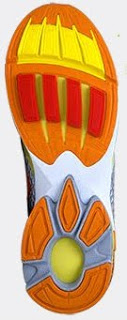
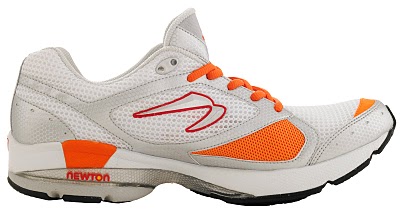
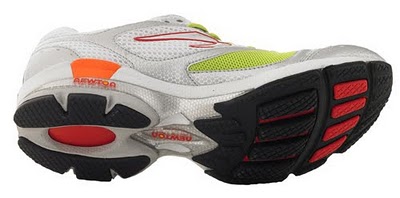

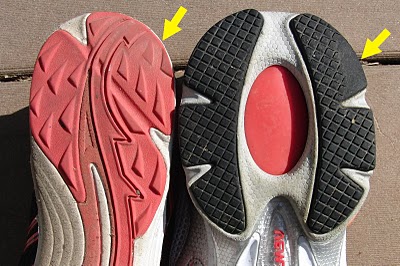
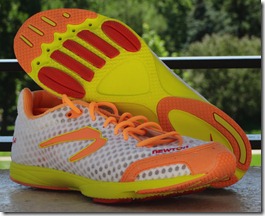
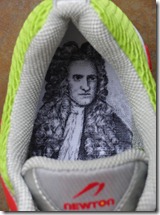
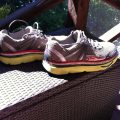
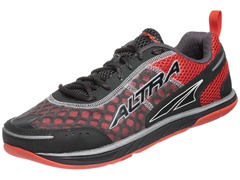
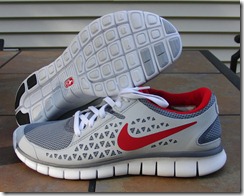














[…] are all kinds of minimalist shoes to simulate barefoot running. From Vibram Fivefingers to Newtons, it seems every shoe manufacturer is paying more attention to the minimalist running movement. […]